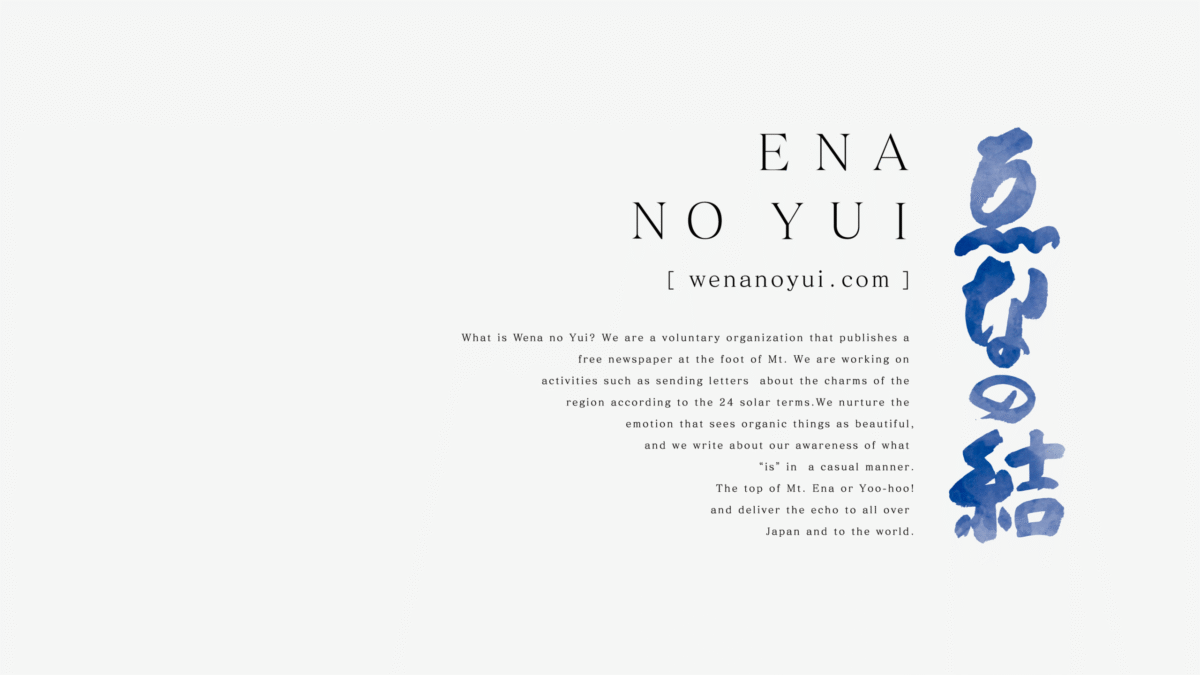立冬に見た、赤い橋からのたゆたう雲海の記憶を抱いたまま、私たちは再び苗木城へと向かいました。季節は二十四節気の小雪へと移り、その名のとおり恵那山はうっすらと雪化粧をまとい始めています。
苗木城
今回は遠望するのではなく、城そのものが乗る巨岩──「天空の城」の頂へと登りました。ガイドの曽我さんに案内していただき、歴史に詳しくない私にも、点と点が結びつくような豊かな時間となりました。曽我さんは、苗木城が「日本のマチュピチュ」とも呼ばれているといいます。「大矢倉」や「天守」の跡は、巨大な岩の上に建物が築かれていたため、人工物と自然が溶け合う、独特で堅固な景観を生み出しています。また、時代の流れや建物の正面などで石の積み方の変化が見られるのも興味深い点です。日本の職人技が光るところだと感じました。
城跡から、次に苗木遠山史料館へと足を移すと、苗木領の歴史的な文化遺産に触れることができました。曽我さんのガイドには、遠山家が岩村、明智、苗木の遠山家とどのように関わってきたのか、その歴史の奥深さが盛り込まれていました。
2026年には築城五百年を迎える「苗木城跡」。今年はプレイベントとして「苗木城まつり」が開催されていました。祭りの一環として遠山家(旧苗木藩主家)を訪ねると、庭木は見事な紅葉に彩られ、屋敷の中ではお琴の演奏が行われ、お抹茶がふるまわれるなど、手厚い歓迎を受けました。
遠山家の玄関は、美しいむくり屋根が目を引きます。ここはかつて、旧藩主家当主とその賓客のみが通ることを許された特別な空間の入り口でした。その優雅な膨らみは、家格(かかく)の高さを静かに示しながらも、同時にお辞儀をするように控えめで丁寧な印象を与え、「謙虚さ」や「優しさ」の象徴とされるそうです。この日の茶席と琴の演奏の場には、十七代目、十八代目の当主のお姿もあり、多くの人々がこの地に受け継がれる誇りと矜持を感じ取ったのではないでしょうか。
Light Snow
Light Snow
Still holding onto the memory of the undulating sea of clouds seen from the red bridge on the first day of winter, we headed once more toward Naegi Castle. The season had shifted to the solar term of Light Snow, and true to its name, Mount Ena was beginning to don a light dusting of snow.
There, the castle I longed to visit again stood.
There, the castle I longed to visit again stood.
We climbed to the summit of the “Castle in the Sky.” Guided by Mr. Soga, it became a rich experience where even I, not well-versed in history, could connect the dots. Mr. Soga mentioned that Naegi Castle is also called “Japan’s Machu Picchu.” The remains of the “Great Storehouse” and the “Keep” were built atop massive rocks, creating a unique, solid landscape where man-made structures blend seamlessly with nature.
The entrance to the Toyama family residence is marked by a beautiful curved roof that catches the eye. This was once the entrance to a special space, permitted only to the head of the former feudal lord’s family and their guests. Its elegant curve quietly signifies the family’s high status while simultaneously giving an impression of modesty and careful courtesy, like a bow. It is said to symbolize “humility” and “kindness.” The presence of the 17th and 18th generation heads at this day’s tea ceremony and koto performance likely allowed many to sense the pride and dignity passed down through this land.



コメント